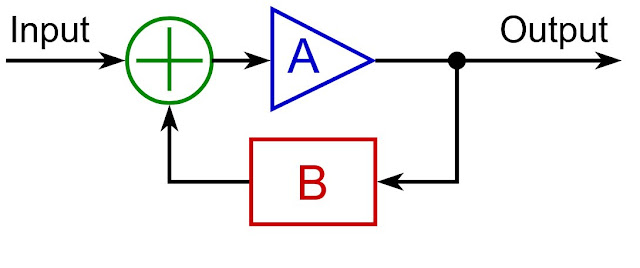This
week's program featured a segment about an "artificial pancreas" for
Type 1 diabetes sufferers, which uses a closed loop control system to
monitor blood glucose and administer a dose from an insulin pump.
What's a Closed Loop, Negative Feedback Control System?
Many systems use close loop control with negative feedback
to control an output of interest. An example is the speed control on
small engines, e.g. the one on your petrol lawn mower. If you run into
longer grass, this slows down the blade and engine. To reduce the change
in rotational speed (the output variable) and keep it at a setpoint (typically 3000 RPM for a mower), a governor
is used. A vane, mounted adjacent to the engine's cooling fan that's
integral to the flywheel, forms part of the governor mechanism. When the
fan slows down, it blows less air onto the vane. The vane is connected
via a linkage to a butterfly valve in the carburetor.
This valve forms part of the throttle mechanism and as the valve opens
up due to movement of the vane, more air/fuel mixture enters the
engine. This generates more power which tends to compensate for the
slowdown of the blade due to the long grass. Other systems use negative
feedback and closed loop control, e.g. your phone charger which has
electronics to keep the output at 5 V DC, irrespective of load. Without
a voltage regulator, all power sources, including
batteries, experience a voltage drop as they're loaded and more current
drawn from them. Voltage stabilisation by a regulator is necessary so
that the electronics in your phone for instance works in a predictable
manner. Other examples of feedback control systems are servos on
vehicles and aircraft and temperature and pressure control in industrial
processes.
Why Negative Feedback and Not Positive Feedback?
The
function of a feedback control system is to keep an output variable at
a fixed or variable setpoint, irrespective of load. So in the lawn
mower example the speed was the parameter that needed to be kept stable.
In negative feedback, the actual speed is fed back and subtracted from
the desired speed (the setpoint) to create an error signal. This error,
via a controlled variable, drives the system in a direction to bring
the output closer to the setpoint. In the lawnmower example, the
controlled variable was the fuel. The term negative feedback comes from
the subtraction that's involved. Positive feedback on the other hand
causes the fed back signal to add to the set point, resulting in
instability and the output diverging from a setpoint (e.g. positive
feedback in a PA system, causing the squealing from loudspeakers). Many
of the systems in our bodies are negative feedback control systems and
like any control system if not tuned properly, there can be
oscillations and instability. Hence the wobbling from side to side when
we're learning to ride a bike!

